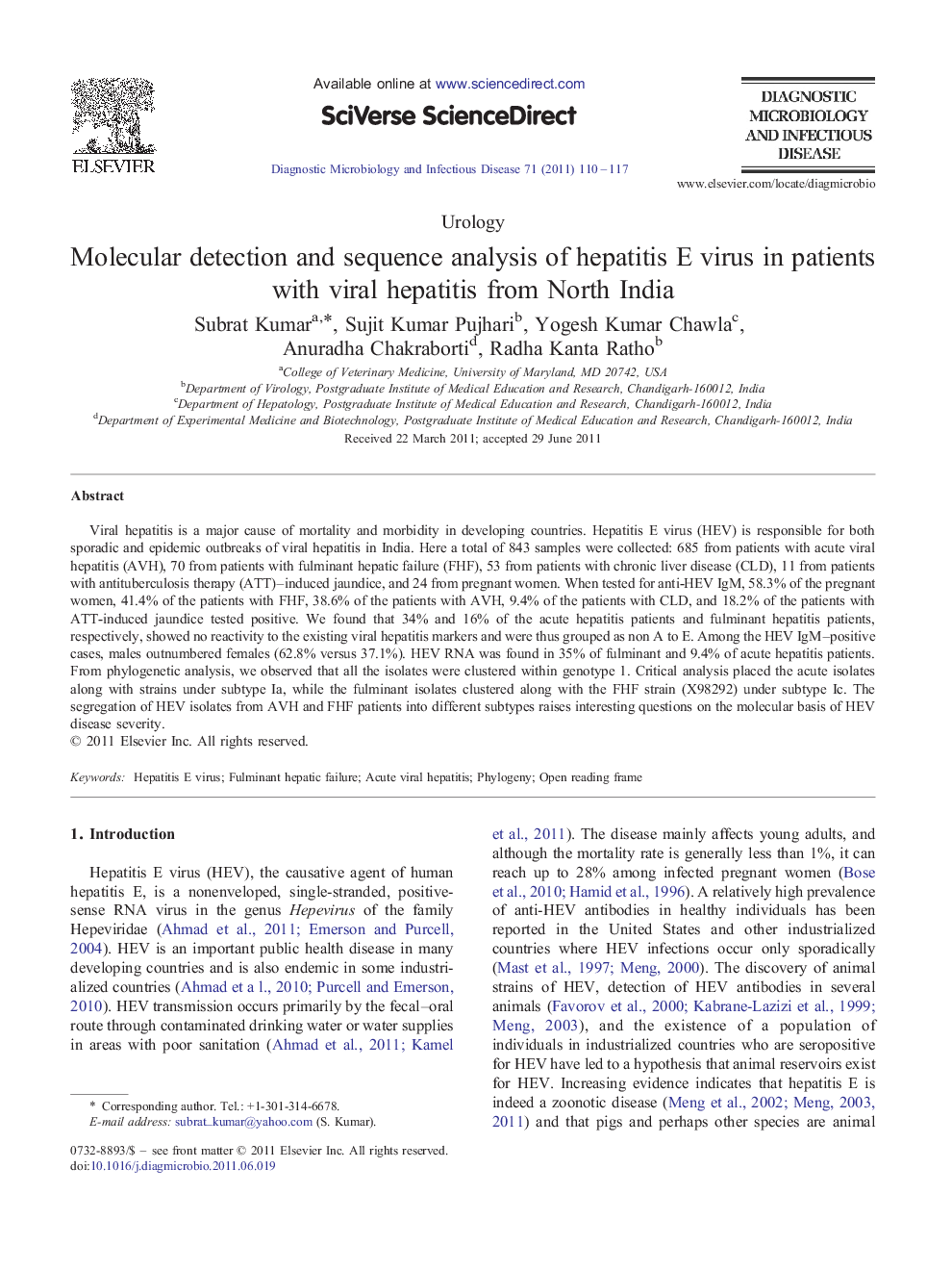| Article ID | Journal | Published Year | Pages | File Type |
|---|---|---|---|---|
| 6116287 | Diagnostic Microbiology and Infectious Disease | 2011 | 8 Pages |
Abstract
Viral hepatitis is a major cause of mortality and morbidity in developing countries. Hepatitis E virus (HEV) is responsible for both sporadic and epidemic outbreaks of viral hepatitis in India. Here a total of 843 samples were collected: 685 from patients with acute viral hepatitis (AVH), 70 from patients with fulminant hepatic failure (FHF), 53 from patients with chronic liver disease (CLD), 11 from patients with antituberculosis therapy (ATT)-induced jaundice, and 24 from pregnant women. When tested for anti-HEV IgM, 58.3% of the pregnant women, 41.4% of the patients with FHF, 38.6% of the patients with AVH, 9.4% of the patients with CLD, and 18.2% of the patients with ATT-induced jaundice tested positive. We found that 34% and 16% of the acute hepatitis patients and fulminant hepatitis patients, respectively, showed no reactivity to the existing viral hepatitis markers and were thus grouped as non A to E. Among the HEV IgM-positive cases, males outnumbered females (62.8% versus 37.1%). HEV RNA was found in 35% of fulminant and 9.4% of acute hepatitis patients. From phylogenetic analysis, we observed that all the isolates were clustered within genotype 1. Critical analysis placed the acute isolates along with strains under subtype Ia, while the fulminant isolates clustered along with the FHF strain (X98292) under subtype Ic. The segregation of HEV isolates from AVH and FHF patients into different subtypes raises interesting questions on the molecular basis of HEV disease severity.
Related Topics
Life Sciences
Immunology and Microbiology
Applied Microbiology and Biotechnology
Authors
Subrat Kumar, Sujit Kumar Pujhari, Yogesh Kumar Chawla, Anuradha Chakraborti, Radha Kanta Ratho,
